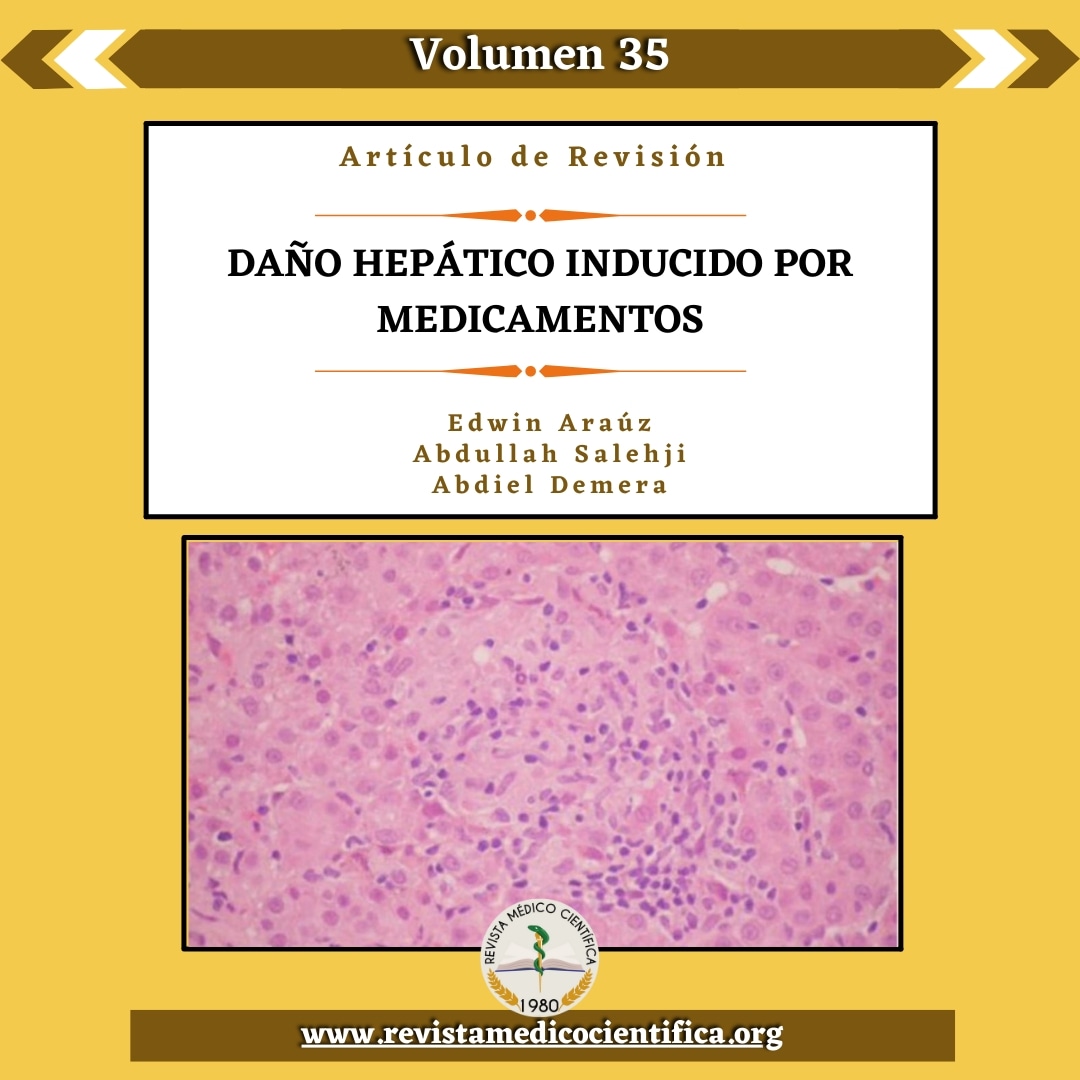DRUG INDUCED LIVER INJURY
Main Article Content
Abstract
Drug-induced liver injury represents a frequent cause of acute liver failure and encompasses a series of reactions that links direct damage to liver cells to immune mechanisms or idiosyncratic reactions.
Its incidence is difficult to determine, however, it is recognized as a rare adverse effect. Depending on the type of enzymatic changes, they can be divided into 3 large groups: cholestatic, hepatocellular and mixed.
Due to the diversity of associated mechanisms, the presentation is heterogeneous, and symptoms vary with different degrees of severity; ranging from asymptomatic patients, whose only evidenced finding includes elevations in liver function tests, to the development of fulminant acute liver failure.
It is a diagnosis of exclusion; all possible causes must be ruled out prior to classifying a patient with this diagnosis. Treatment in general consists of suspending the causal agent and supportive treatment, however, depending on the etiology, specific therapies may be offered.
Article Details

This work is licensed under a Creative Commons Attribution-NonCommercial-NoDerivatives 4.0 International License.
The authors grant the Editorial Comitte of Revista Medico Cientifica the right to publish this article in it. Also, they state that this manuscript has not been published prevously.

